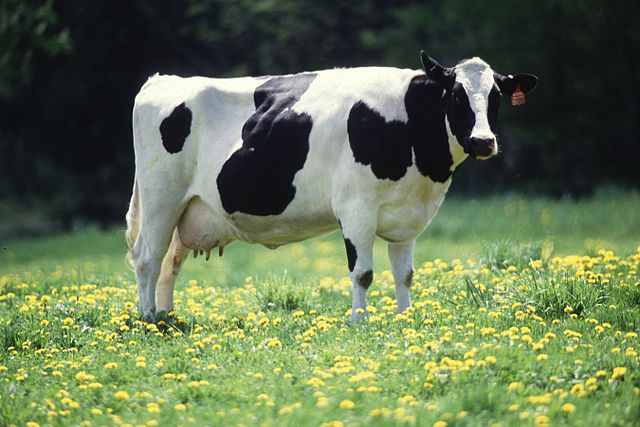 |
This is a file from the Wikimedia Commons. Information from its description page there is shown below.
Commons is a freely licensed media file repository. You can help.
|
| DescriptionCow female black white.jpg |
English: Holstein-Friesian milk cow – "Because much of the cost of a cow is the feed and labor needed to maintain her, fewer but higher yielding cows mean lower priced milk. Dairy herd improvement ultimately benefits consumers. That's why it's just as important to keep complete and accurate records as it is to keep the cows contented. The National Cooperative Dairy Herd Improvement Program has been tracking Bossy's milk yields since 1905. Over the years, this program has made enormous contributions to dairy cattle breeding. ARS scientists receive the lactation records of all herds enrolled in the program and use the figures to rank the bulls that sire the nation's dairy cows and to rank the cows themselves. The results of years and years of scientific dairying? Milk production has been trending upward for more than 25 years in the United States-from about 117,000 million pounds in 1970 to more than 150,000 million pounds in 1994-even though the number of milk cows has been reduced."
Nederlands: Een koe
|
| Date |
before September 2002 |
| Source |
www.ars.usda.gov: Image Number K5176-3 |
| Author |
Keith Weller/USDA |
Permission
( Reusing this file) |
| Public domainPublic domainfalsefalse |
 |
This image is in the public domain because it contains materials that originally came from the Agricultural Research Service, the research agency of the United States Department of Agriculture.
|
 |
|
File usage
The following pages on Schools Wikipedia link to this image (list may be incomplete):
SOS Children's Villages chose the best bits of Wikipedia to help you learn. SOS Childrens Villages is famous for the love and shelter it brings to lone children, but we also support families in the areas around our Children's Villages, helping those who need us the most. There are many ways to help with SOS Children's Villages.




